Learn
Electric Charge
All things are made of atoms and all atoms are made of protons, neutrons and electrons. Each proton and electron of each atom is equal in strength. When the number of protons equals the number of electrons, the atom has a neutral charge.
The electrons are free to move around the atom and move to other atoms during bonding.
- When an atom loses electrons, it has more protons than electrons.
- Therefore, the atom has more positive charges than negative charges.
- It will have overall positive charge.
- When an atom gains electrons, it has more electrons than protons.
- Therefore, it has more negatively charged particles, which gives the atom an overall negative charge.
- Remember, a charged atom is called an ion.
When you think of electricity and how it powers many of the things you use every day, I bet you don't think about those electrical charges coming from subatomic particles! To learn more about electrical charges and electricity, read What is Electricity?
Types of Charging
Electric charges can be transferred by:
- Contact
- Friction
- Induction
Charging on Contact
The transfer of electrons from one object to another can charge those objects. Charging by contact occurs when a neutral item, such as a door knob, is touched by a negatively charged item, such as your hand.
- The electrons will transfer across the two objects.
- If you look carefully or this happens in the dark you may see the spark from the transfer.
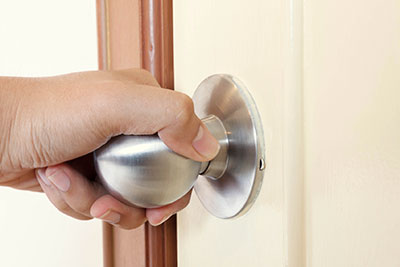
Charging by Friction
Charging by friction occurs when you slide objects across each other and some electrons are transferred between the two objects. An example of this is brushing or combing your dry hair.
- The plastic of the brush holds the electrons tighter around the atom than our hair does.
- This allows the electrons to transfer from the hair to the brush easily.
- The hair becomes positively charged while the brush becomes negatively charged.
- Now that the brush is negatively charged, it can even pick up small pieces of paper!

Charging by Induction
Charging by induction occurs because electric forces also act over a distance. Charged objects that are brought in close proximity to a neutral object can transfer the charge by induction. When the charged object is brought close enough to the neutral object, it will cause the electrons of the neutral object to rearrange their position. An example is rubbing a balloon with a cloth to make it negatively charged.
- As you move the balloon close to the wall, the electrons will move away from the balloon.
- This leaves a positively charged spot on the wall.
- Since the balloon is negatively charged and the spot on the wall is positively charged, the balloon will appear to hang on the wall.
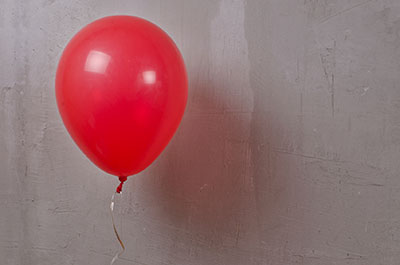
Lightning
Lightning is a static discharge due to the buildup of areas of positive and negative charges. In a thundercloud, static electricity is generated by the movement of air masses swirling around in the cloud.
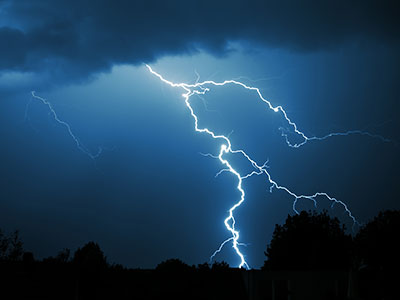
- Convection currents in the storm cloud cause charge separation.
- The warm, dusty air moves up and the cold air with ice crystals move down.
- As the electric charges continue to move through the air, they collide with atoms and molecules (charging by friction).
- The bottom of the cloud becomes negatively charged while the top of the cloud becomes positively charged.
- Since the bottom of the cloud is negatively charged, it will repel the negatively charged particles on the ground, causing them to rearrange their position (charging by induction).
- This causes the ground to be positively charged.
- The negative charges in the cloud attract the positive charges on the ground, and they move toward each other.
- The result of this connection is a flash of light that we call lightning!
As the bolt of lightning rips through the sky, it also generates powerful sound waves by stripping the electrons off atoms in the atmosphere. This produces large amounts of heat. The area around the lightning bolt can reach 30,000 °C (this is over 54,000 °F). The heat causes the air in the lightning bolts path to expand rapidly producing sound waves that we call thunder.
What to Do in a Thunderstorm with Lightning
If you are outside and cannot get in doors when lightning begins, you should:
- Crouch down on the balls of your feet (close to the toes)
- Use your arms for balance
- Do not touch your hands to the ground.
While outside during thunderstorm, you should never:
- Touch metal or any wiring
- Stand or sit under trees or in open spaces
- Lay down in open areas
If you are inside during a thunderstorm, you should unplug electrical appliances and electronics that are not on surge protected electrical circuits.
While inside a house during thunderstorm, you should never:
- Use water to wash dishes or take a shower
- Use metal utensils while cooking
- Talk on a land line telephone
Being in a car during a thunderstorm is pretty safe. The tires are conductive enough to keep the car grounded. However, be sure not to touch any metal inside the car.
Electric Fields
A charged object creates an electric field, an alteration of the space in the region that surrounds it. The effect of the charged electric field can be felt by other charged objects around it.
The diagram below illustrates the direction positive charges and negative charges are directed. The last picture illustrates a neutral charge.

The diagram below illustrates the electric field when opposite charges come contact with one another.
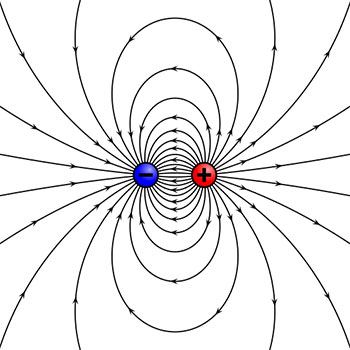
The diagram below illustrates the electric field when like charges come in contact with one another.

Electric field lines never cross one another. The field lines near a positive charge points away from it while the field lines of a negative charge points away from the charge. When there are two positive charges the field lines point away from each other. The field lines of a positive and a negative charge are illustrated as connecting.
In the diagram below, a magnet and iron filings illustrate field lines. Notice how the field lines never cross one another.
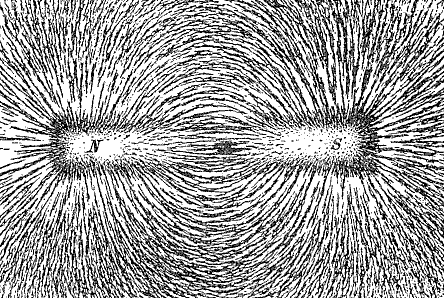
Review
Review transferring charges using Physics Classroom's Lesson 2 — Methods of Charging. Be sure to read the all 4 sections and complete the Check Your Understanding questions at the bottom of each page.

